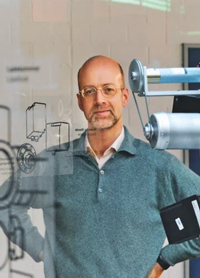|
Jeroen A. van Bokhoven - Sergio Carbajo - Juan A. Hermoso - Christina Kamma-Lorger - Bernhard Keimer - Sara Lafuerza - Jordi Llorca - Gema Martínez Criado - Chris Milne - Trinitat Pradell - Juan Rubio - Miquel Salmerón - Isabel Usón - Denis Vyalikh
|
|
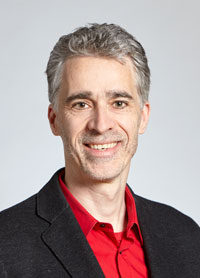 |
Jeroen A. van BokhovenInstitute for Chemical and Bioengineering at ETH Zurich and Paul Scherrer Institute, SwitzerlandHe completed a degree in chemistry at Utrecht University (Netherlands) in 1995 and went on to obtain a PhD in inorganic chemistry and catalysis from the same university in 2000 (with honours). From 1999 until 2002 he was head of the XAS (X-ray absorption spectroscopy) users - support group at Utrecht University. In 2002, he moved to the ETH, where he worked as researcher in the group of professor Prins. In 2006 he obtained an SNF assistant professorship in the Department of Chemistry and Applied Biology. He was the 2008 recipient of the Swiss Chemical Society Werner Prize. Since 2010, Jeroen A. van Bokhoven has a Chair in Heterogeneous Catalysis at the Institute for Chemical and Bioengineering at ETH Zurich and is Head of Laboratory for Catalysis and Sustainable Chemistry at Paul Scherrer Institute. Van Bokhoven works in the field of heterogeneous catalysis aiming at producing better catalysts and processes that allow sustainable development. Goal is the determination of structure-performance relationships, which aid the design and construction of better catalysts for cleaner and more efficient processes. His main interests are heterogeneous catalysts and developing advanced tools in X-ray spectroscopy and scattering to study the catalyst structure under catalytic relevant conditions.
|
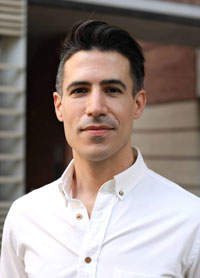 |
Sergio CarbajoUCLA Electrical & Computer Engineering (ECE) and Physics Departments, Los Angeles, CA, USASergio Carbajo is an assistant professor at the UCLA Electrical & Computer Engineering (ECE) and Physics Departments and is also visiting professor at the Photon Science Division at SLAC National Accelerator Laboratory, Stanford University. Over the last decade, Sergio's research has been dedicated to the pursuit of transformational photon and particle sources and their applications in basic and environmental sciences, medicine, and industry. Sergio has nurtured a research career that is founded on the unification of quantum and nonlinear optics and laser-matter interactions to develop instruments capable of tackling grand fundamental questions in physics, chemistry, and biology. He has also focused on compact accelerator technologies by tapping into a broad range of methodologies, including free-space, terahertz, and hybrid accelerators, as well as plasma-based x-ray sources—and proven their competitiveness in scientific and commercial applications. Sergio leads the Quantum Light-Matter Cooperative (Q-LMC), whose mission is to understand, design, and ultimately control light-driven physical processes to help solve interconnected socio-technological challenges.
|
 |
Juan A. HermosoSpanish National Research Council, CSIC, SpainJuan A. Hermoso was born in León in 1964 and obtained his Bachelor degree in Physics from the Universidad de Salamanca in 1989, and his PhD in Physics in 1992 from Universidad Complutense de Madrid under direction of Prof. Martin M. Ripoll. As a postdoctoral fellow he was working in Molecular Dynamic calculations in the group of Tranqui Duc at the Laboratoire de Crystallographie CNRS (Grenoble, France) and in Macromolecular Crystallography in the group of Juan Fontecilla-Camps at Institut de Biologie Structurale-IBS (Grenoble, France). He is currently Research Professor of the Spanish National Research Council (CSIC) and Director of the Institute of Physical-Chemistry “Rocasolano” in Madrid (Spain). His research focuses on multidisciplinary approach with X-ray crystallography, Protein Engineering and Bioinformatics tools aiming to provide knowledge of the bacterial surface proteins involved in key functions, such as binding of the pathogen to host cellular receptors, antibiotics resistance, cell division, oxidative stress resistance, pathogenesis mechanisms or the remodeling of the peptidoglycan framework, which represent important mechanisms in the process of disease. He has authored more than 190 papers in peer review journals such as Nature Structural & Molecular Biology, Nature Comms, JACS, PNAS, EMBO Journal, EMBO Mol Med, Structure, EMBO reports, Curr Opin in Microbiology, Curr Opin in Struct Biol and Angewandte Chemie. He has received numerous honours and awards for his research contributions, among them he was awarded in 2015 with the “Manuel Rico- Bruker” award of the Spanish Society of Biophysics for his trajectory. He is member of the American Society for Biochemistry & Molecular Biology, Spanish Society for Biochemistry and Molecular Biology, Spanish Society for Biophysics, Spanish Group of Crystallography and Spanish Synchrotron Radiation Users Organization. In addition, he was Adjunct ANEP (Spanish National Agency for Scientific Evaluation) in Fundamental and Systems Biology Area (Structural Biology) (2015- 2018). He has been member of the Review Committee of synchrotron beamlines BM25 (ESRF, Grenoble) and XALOC (ALBA, Barcelona). Councillor of the Spanish Synchrotron Radiation Users Organization Committee (AUSE), (2003-2011), councillor of the Spanish Group of Crystallography (GEC) (2000-2011), member of the Scientific Committee of the Spanish beamline BM25 at the ESRF (Grenoble, France, 2007-2015), member of the Scientific Committee (Sub-Committee 8 (Biology)) of the ILL International Neutron Facility (Grenoble, France, 2009-2010). He is regularly invited to speak at international conferences and meetings and to serve as a referee for peer review journals.
|
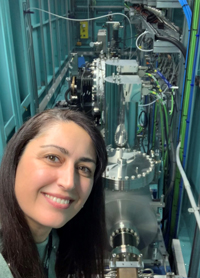 |
Scattering group, Australian Synchrotron – ANSTO, AustraliaChristina holds a BSc in Biology with Genetics from the University of Bedfordshire, UK and an MSc in Molecular Modelling, fully funded by the EPSRC UK, from Cardiff University. She received her PhD in Cell Biology and Biophysics from Cardiff University (UK) in 2007, before taking-up an MRC UK funded Research Associate role (2007-2012) at the Structural Biophysics Group, at Cardiff University. She led a research program relating to collagen structure and function in the cornea, using synchrotron X-Ray scattering and other imaging techniques. Research outcomes contributed to the application of improved medical procedures in the clinic. She then took-up a role of Beamline Scientist at the ALBA Synchrotron in Spain between 2012-2019 on the NCD-SWEET Beamline, where she contributed to the upgrading, commissioning and operation of the beamline and sample environment instrumentation. She secured funding and brought equipment at the mammalian cell culture laboratory and established several long-term academic and clinical research collaborations. In 2019 Christina moved on at the Australian Synchrotron ANSTO as a Lead Scientist at the Biological Small Angle X-ray Scattering beamline (BioSAXS). She has led the design, procurement, installation and commissioning of the BioSAXS Beamline as part of the BRIGHT Program. She engaged with stakeholders and the user community in order to obtain technical and scientific direction for the construction of the beamline. Christina is also a member of the Project Advisory Committee for "National Tools for Scattering and Beyond" - a collaborative Australian/New Zealand wide project that aims to improve software infrastructure for science, within the Australian Characterisation Commons at Scale (ACCS) project. Christina’s research interests focus on biomedical applications and drug delivery method development. She is part of the Automation Working Group within the Australian Synchrotron and participates at the Proposal Advisory Committee at the Australian Centre for Neutron Scattering (ACNS). She is passionate to see more women in STEM and she is a mentor at the Australian Institute for Nuclear Science and Engineering offering support and encouragement to undergraduate female students. In 2022, Christina was appointed Group Manager for the Scattering team and she is managing the teams of both scattering beamlines (SAXSWAXS and BioSAXS) at the Australian Synchrotron.
|
|
Picture from Axel Griesch |
Director of the Solid State Spectroscopy Department at the Max Planck Institute for Solid State ResearchBernhard Keimer obtained his physics education at the Technical University of Munich and at the Massachusetts Institute of Technology, where he received his Ph.D. degree in 1991. He spent a year as postdoctoral associate at MIT and seven years on the faculty of Princeton University, where he was appointed Full Professor in 1997. In 1998 he was appointed Director at the Max Planck Institute for Solid State Research, where he and his research group investigate quantum materials using spectroscopic methods. Scientific awards include the Leibniz Prize in 2012 and the Kamerlingh Onnes Prize in 2022. |
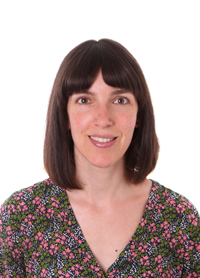 |
Sara LafuerzaInstituto de Nanociencia y Materiales de Aragón (INMA), SpainSara Lafuerza is currently a Marie Skłodowska-Curie fellow at Instituto de Nanociencia y Materiales de Aragón (INMA) in Zaragoza, Spain. She holds a BSc in Physics, a MSc in Physics and Physical Technologies and a PhD in Physics (2014) from Universidad de Zaragoza. After receiving her PhD, which focused on potential multiferroic oxides studied with measurements of the macroscopic properties (electric and magnetic) and synchrotron radiation techniques, she joined the X-ray absorption and emission spectroscopy (XAS-XES) beamline ID26 of the European Synchrotron Radiation Facility (ESRF) in Grenoble, France. First as post-doctoral researcher (2014-2015) and then appointed to the position of second beamline scientist (2015-2020), she led a scientific program oriented towards the application of XAS-XES spectroscopies in the field of strongly correlated systems to study the local electronic (charge and spin) and geometrical structure. She also worked in the development of a liquid jet setup with magnetic field for investigating, directly in the liquid phase, colloidal nanoparticles for biomedical applications. Since 2021, she leads the European project EAGER (Exploring Aurivillius phases for Green Electrocaloric Refrigeration) at INMA, where she combines in-house-developed laboratory characterization methods with advanced XAS-XES spectroscopies in the study of new electrocaloric oxides for green refrigeration.
|
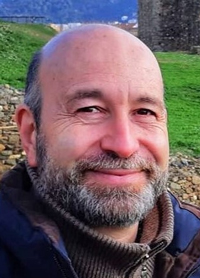 |
Jordi LlorcaUniversitat Politècnica de Catalunya (UPC)Jordi Llorca is Full Professor at the Universitat Politècnica de Catalunya-BarcelonaTech, where he is currently Vice-rector for Research. He has received the Distinction from the Generalitat de Catalunya for the Promotion of University Research, the Humbert Torres Prize and the ICREA Academia award. He has been Director of the Institute of Energy Technologies, Director of the Center for Research in NanoEngineering, and Director of the Barcelona Research Center in Multiscale Science and Engineering. He is an Academician of the Institute for Catalan Studies, Division of Science and Technology. He has published more than 400 scholarly articles in the area of heterogeneous catalysis, authored 10 patents, and created 2 spin-off companies. His main interest focuses on the identification and design of active sites in catalysts and photocatalysts, in which the use of synchrotron techniques and advanced microscopy are essential. |
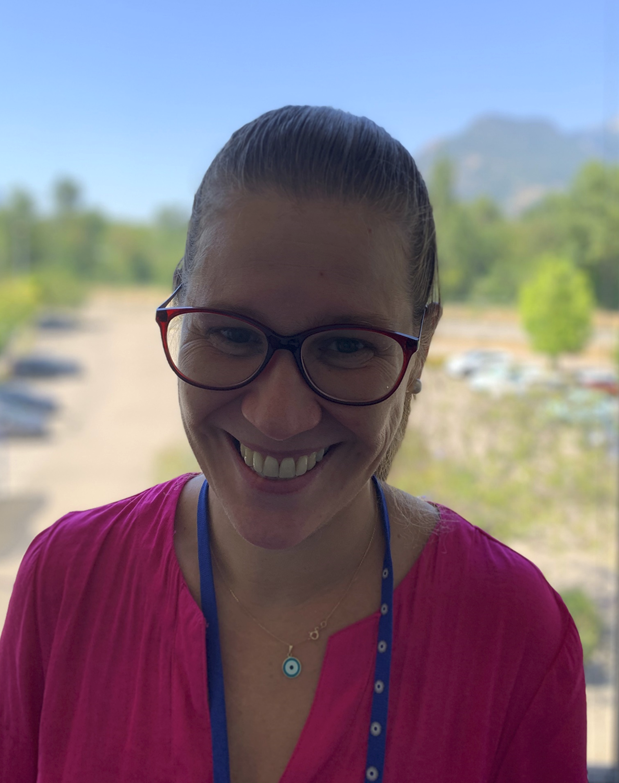 |
Gemma Martínez CriadoDirector of Research at the ESRF, FranceAfter studying physics in Havana, Gema (2000 EMRS Young Researcher Award winner) got her doctorate in 2002 under the supervision of Martin Stutzmann (Walter Schottky Institute, Technical University of Munich) and Andres Cantarero (Physics Department, University of Valencia). From 2002 she did postdoctoral work on hard X-ray microscopy at the European Synchrotron Radiation Facility, until 2005. After that, she became second scientist at the hard X-ray microprobe beamline ID22 of the ESRF. In 2009, she was appointed permanent scientist in charge of the beamline ID22. As part of the ESRF Upgrade Programme Phase I, from 2009 to 2014, she was involved in the design and construction of the hard X-ray Nanoprobe ID16B for X-ray nanoanalysis as beamline responsible. In 2016 Gema moved to the ICMM-CSIC as senior scientist, focusing her research on the interplay between microscopic properties and materials functionalities. The research of Gema Martinez-Criado explores fundamental and application-oriented aspects of condensed matter using hard X-ray micro and nanobeams. She has more than 100 publications and several book chapters and reviews.
|
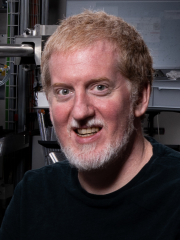 |
Chris MilneEuropean XFEL, GermanyChris Milne currently works at the European XFEL facility in Schenefeld, Germany. He is the leading scientist of the Femtosecond X-ray Experiments (FXE) Instrument. Chris’s research is focused on Photochemistry, Physical Chemistry and Chemical Biology. He's interested in using advanced X-ray techniques to probe the ultrafast electronic and structural dynamics in photoexcited molecules and materials.
|
 |
Trinitat PradellUniversitat Politècnica de Catalunya (UPC), SpainTrinitat Pradell, PhD in Physics by Universitat de Barcelona is Full Professor at the Physics Department of the Universitat Politècnica de Catalunya. She worked at the Institute of Advanced Materials -Join Research Centre (Petten, Holanda, 1988-1989) and at the RLAHA, Oxford University (2002-2003) and at the “Research Laboratory of The Palace Museum in Beijing (2014). Her research has been developed in the field of Materials Science with special dedication to materials of interest in the field of Cultural Heritage and Conservation Science. Her investigation is devoted to the study of the production technology and the conservation state of Cultural Heritage materials providing data of interest to the History and Conservation Science. She is member of one of the first groups (since year 2000) using Synchrotron light in the field of Cultural Materials Science. In the period 2010-2014 she was member of the Membre del Peer Review Committee 6 “Ancient materials, Environment and Earth” at the Soleil Synchrotron of Paris and in the period 2014-2018 of the member of the Scientific Advisory Comitee at the Laboratori de Llum Sincrotró ALBA. She is member member of the Science and Technology section of the Institut d’Estudis Catalans. She has about 130 articles published in international journals with peer reviewing and appeared on the top 2% scientists of her subject from the Clarivate 2021 list.
|
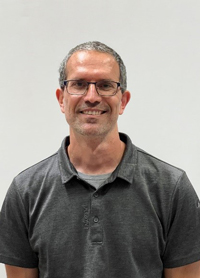 |
Juan RubioBM25-SpLin, ESRF, FranceBorn in Madrid in 1976. Master degree in Science Physics, Specialized in Optics and Matter structure. Universidad Autónoma de Madrid (UAM), June 1999Doctor in Physics. PhD in Physics by Universidad Autónoma de Madrid. May 2005. “Synchrotron X-ray radiation applied to the study of thin films: The case of La0.7Ca0.3MnO3/SrTiO3(001)”. Director: Germán R. Castro. Spanish CRG beamline (BM25-SpLine) at the ESRF, (Grenoble, France) / Instituto de Ciencia de Materiales de Madrid (CSIC), (Madrid, Spain). Titular Scientist at ICMM-CSIC in 2008. Responsible from BM25-SpLine in 2018. Synchrotron experience: BM25-SpLine staff from 2000 to Nowadays. Area of expertise: Growth and characterization of epitaxial thin films.
|
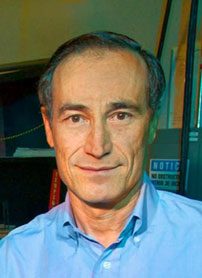 |
Miquel SalmerónPrincipal Investigator at the Lawrence Berkeley National Laboratory and Adjunct Professor at UC Berkeley Materials Science and Engineering Department, USAHe received his B.A. in Physics from the University of Barcelona, and his Ph.D. from the University Autonòma of Madrid, Spain, in 1975. In 1984 he moved to the Lawrence Berkeley National Laboratory as a Divisional Fellow, becoming a Senior Scientist in 1996. His research focuses on atomic scale structure and properties of surfaces and nanomaterials for applications in electronics, catalysis, tribology and environmental science. He has developed novel instrumentation for studies of surface related phenomena, including High Pressure Scanning Tunneling Microscopy for catalysis studies, Scanning Polarization Force Microscopy for studies of liquid films and Ambient Pressure Photoelectron Spectroscopy for Environmental and Catalysis studies. He was elected Fellow of the American Physical Society in 1996 and Fellow of the American Vacuum Society in 2003. He received the Outstanding Scientific Accomplishment Award in Materials Chemistry in 1995, and the Outstanding Research Award in 1996 from the U.S. Department of Energy. In 2004 he received the Klaus Halbach Award for the development of innovative instrumentation at the Advanced Light Source. In 2008 he received the Medard Welch Award of the American Vacuum Society and the Langmuir Lectureship Award of the American Chemical Society. In 2010 he received the R&D 100 Award of R&D Magazine. In 2012 he received the MRS Medal Award. In 2015 he received the APS Davisson-Germer Prize in Atomic or Surface Physics. Prof. Salmeron is the President of the Scientific Advisory Board of the "Institut Catala de Nanotecnologia" in Barcelona, Spain. He has published 487 Journal articles and book chapters (May 2015).
|
 |
Isabel UsónInstitut de Biologia Molecular de Barcelona (CSIC - IBMB)Isabel Usón Finkenzeller completed a Chemistry degree (1987) and Ph. D. (1992) in synthetic organometallic chemistry at the U. of Zaragoza. In November 1992, she joined Procter & Gamble as Product Research Scientist in Brussels, gaining insight into the science and management of industrial chemistry. She moved as HCM postdoc to the U. of Göttingen in 1994. She has developed methods for crystallography for 23 years, first within the group of Prof. Sheldrick FRS, author of SHELX, during her postdoctoral research and Habilitation (1994-2001) and as of July 2001 leading an emergent group. September 2003, she moved to Barcelona as ICREA Research Professor. Her work on structural chemistry and biology has led to over 165 publications. The software ARCIMBOLDO and SHELX are the central output of her work. She is Life Member of Clare Hall College (U. Cambridge). |
 |
Denis VyalikhIkerbasque Research Professor, DIPC, SpainDenis received his PhD in Physics from Saint-Petersburg State University in 2001, where he also habilitated in 2012. From 2001-2005, he worked as a beamline scientists at BESSY-II in Berlin which was supported by Free University of Berlin and later by the University of Technology in Dresden. From 2005 to 2016, he was a group leader in the Institute of Solid State Physics at the University in Dresden, in the group of Prof. Clemens Laubschat. Since 2017, he has been IKERBASQUE research professor at Donostia International Physics Center (San-Sebastian). Denis’ research activities are focused on the development and characterization of functional and quantum materials with novel electronic and magnetic properties, with particular emphasis on 2D systems. His interests cover a wide range of topics in material science including i) 4f electron materials and their surfaces, which can serve as platforms to study in details phenomena linked with spin-orbit, Kondo, crystal-electric field, and exchange magnetic interactions, ii) functionalized graphene- (N-, B-, H- graphene) and h-BN layers, formed on metallic and semiconducting substrates with flat and curved surfaces, and iii) self-assembled macromolecules as well as native and metallized biological materials (DNA and S-layer proteins). For his research, Denis combines state-of-art synchrotron techniques such as “photon-in electron-out” and “photon-in photon-out” spectroscopies with theoretical calculations and modelling for a comprehensive characterization of electronic, structural and magnetic properties of studied materials.
|

